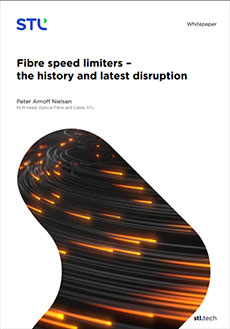Fibre speed limiters – the history and latest disruption
While optical fibre is a fantastic means of transportation of data it does have its limitations. There are a range of optical parameters that limit how far a given transmission system can transmit a signal before optical-electrical-optical regeneration is required. As transmission systems and fibres have developed over the last 25 years, we have also seen those limitations shift amongst the fibre parameters.
Let’s take quick look at the history that led to the present situation. In doing so we follow the evolution of the ITU standards.
G.652
Still referred to as standard transmission fibre and still making up for the absolute bulk of optical fibre cable installations. The fibre has a relatively high Chromatic Dispersion and in the early days of manufacturing no particular eforts were made to avoid Polarization Mode Dispersion. The main speed/length limiting parameter up to the 10 Gb/s systems was attenuation.
G.653
As Chromatic Dispersion was an issue even at single channel transmission the G.653 was an excellent answer with its zero-dispersion wavelength at 1550 nm. This fibre had a very short technological lifetime and manufacturing has been discontinued long ago.
G.655
With the introduction of Dense Wavelength Division Multiplexing (DWDM) zero-dispersion does not work well. Four Wave Mixing amongst the transmission channels became a new limiter. So Chromatic Dispersion was reintroduced in the fibre although at much less numbers than in the G.652 fibre.



